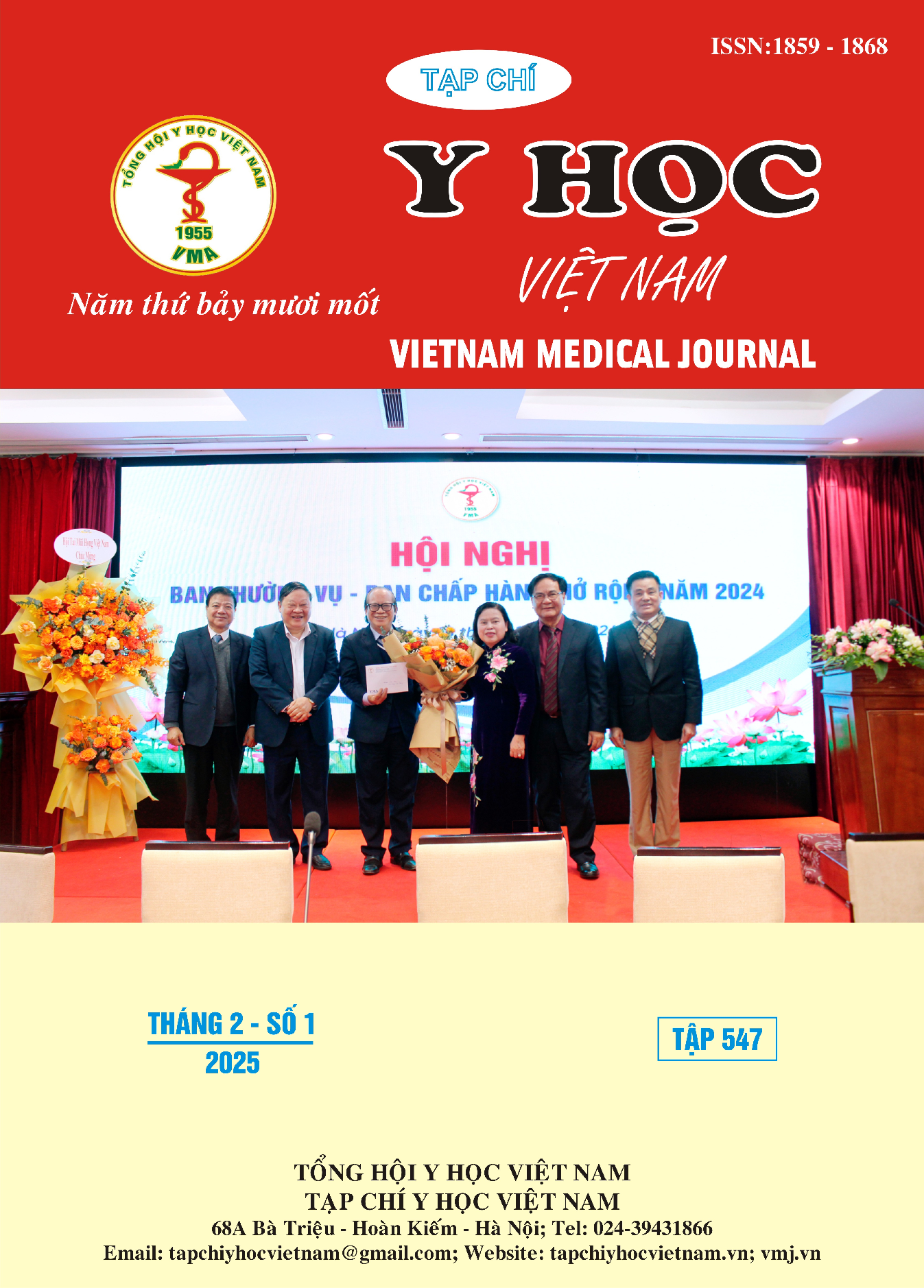CLINICAL AND PARACLINICAL CHARACTERISTICS OF PRIMARY ANGLE-CLOSURE GLAUCOMA PATIENTS
Main Article Content
Abstract
Objective: To describe the clinical and paraclinical characteristics of primary angle-closure glaucoma patients. Subjects and Methods: A descriptive clinical study was conducted on 101 primary angle-closure glaucoma patients at Military Hospital 103, Hanoi Eye Hospital, and Ha Dong Eye Hospital from January 1, 2023, to August 31, 2024. Results: The main symptoms included blurred vision (100%), eye pain (83.2%), redness (76.2%), and headache (77.2%). Patients with poor visual acuity made up the largest group (44.6%). The mean intraocular pressure (IOP) was 46.1 ± 12.4 mmHg, with most patients (67.3%) having an IOP >35 mmHg. Shallow anterior chambers were observed in 100% of patients, along with conjunctival injection (80.2%), corneal edema (63.4%), and complete anterior angle closure (68.3%). The anterior chamber depth was 2.31 ± 0.29 mm, axial length was 22.50 ± 0.73 mm, and lens thickness was 5.10 ± 0.48 mm. Conclusion: Primary angle-closure glaucoma predominantly affects elderly individuals, particularly females, with a higher incidence than in males. Acute glaucoma was more prevalent than the chronic form, commonly presenting with symptoms of blurred vision, eye pain, and elevated intraocular pressure.
Article Details
Keywords
clinical characteristics, paraclinical characteristics, primary angle-closure glaucoma.
References
2. Tham Y.C, Li, X, Wong, T.Y, Quigley, H.A, Aung, T, Cheng, C.Y (2014). Global prevalence of glaucoma and projections of glaucoma burden through 2040: a systematic review and meta-analysis. Ophthalmology, 121: 2081-90.
3. Limburg Hans (2015). Result of National Survey on Avoidable Blindness in Viet Nam using RAAB methodology. Medical Service Administration of Viet Nam Ministy of Health and Viet Nam National Institute of Ophthalmology 10/2015.
4. Seah Steve KL, Foster Paul J, Chew Paul TK, et al. (1997). Incidence of acute primary angle-closure glaucoma in Singapore: an island-wide survey. Archives of ophthalmology, 115(11): 1436-1440.
5. Prum Bruce E, Herndon Leon W, Moroi Sayoko E, et al. (2016). Primary angle closure preferred practice pattern® guidelines. Ophthalmology, 123(1): P1-P40.
6. Wang Ya Xing, Xu Liang, Yang Hua, et al. (2010). Prevalence of glaucoma in North China: the Beijing eye study. American journal of ophthalmology, 150(6): 917-924.
7. Quigley Harry A, Broman Aimee T (2006). The number of people with glaucoma worldwide in 2010 and 2020. British journal of ophthalmology, 90(3): 262-267.
8. He Mingguang, Foster Paul J, Ge Jian, et al. (2006). Prevalence and clinical characteristics of glaucoma in adult Chinese: a population-based study in Liwan District, Guangzhou. Investigative ophthalmology visual science, 47(7): 2782-2788.
9. Foster P. J., Buhrmann R., Quigley H. A., et al. (2002). The definition and classification of glaucoma in prevalence surveys. British journal of ophthalmology, 86(2): 238-242.
10. Weinreb Robert N, Khaw Peng Tee (2004). Primary open-angle glaucoma. The lancet, 363 (9422): 1711-1720.


